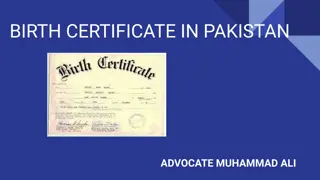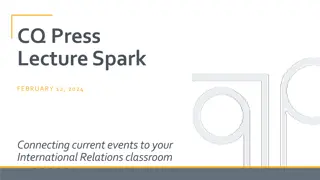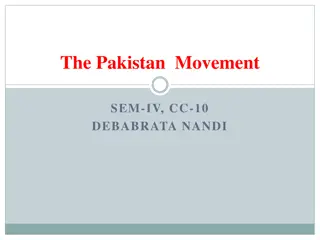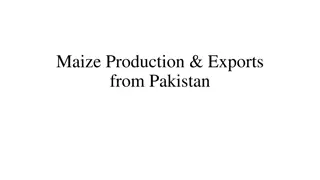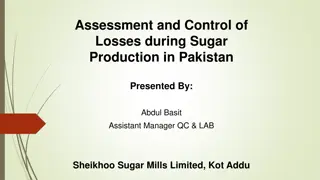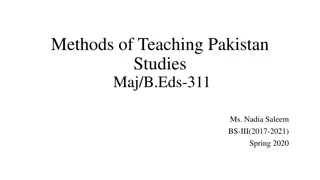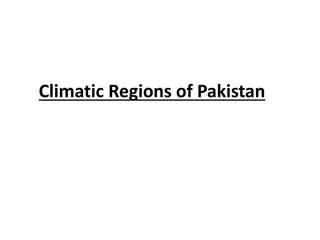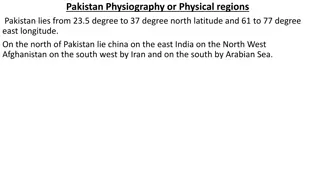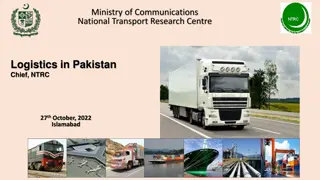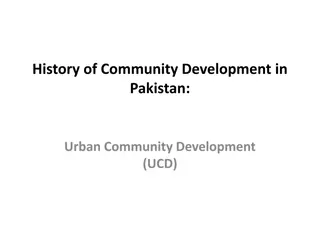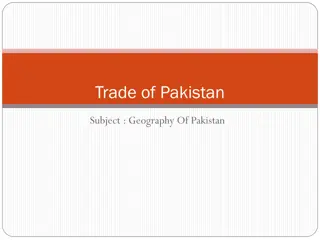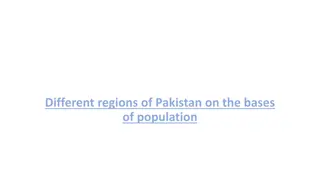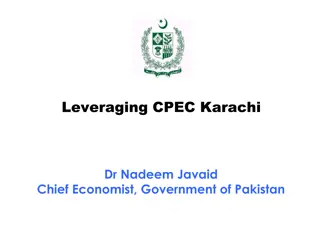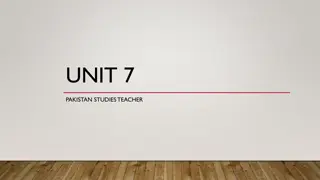
Empowering Women in Pakistan: Initiatives and Impact
Explore Pakistan's efforts in empowering women through initiatives like the Benazir Income Support Programme, reserved seats in legislatures, and anti-violence measures. Learn about the National Commission for the Status of Women and the role of women in the development of OIC Member States.
Download Presentation

Please find below an Image/Link to download the presentation.
The content on the website is provided AS IS for your information and personal use only. It may not be sold, licensed, or shared on other websites without obtaining consent from the author. If you encounter any issues during the download, it is possible that the publisher has removed the file from their server.
You are allowed to download the files provided on this website for personal or commercial use, subject to the condition that they are used lawfully. All files are the property of their respective owners.
The content on the website is provided AS IS for your information and personal use only. It may not be sold, licensed, or shared on other websites without obtaining consent from the author.
E N D
Presentation Transcript
Empowering Women -Pakistan s Experiences Workshop on Role of women in the development of OIC Member States , 3-4 October 2016, Ankara
Overarching framework Ministry of Human Rights National Commission for Human Rights National Action Plan for Human Rights launched in February 2016; Rights of Women principal area of focus
National Commission for the Status of Women (NCSW) National Commission for the Status of Women (NCSW) Autonomous body Reviewing, initiating and monitoring laws and policies Assessing their impact on women For more information (http://www.ncsw.gov.pk/)
Political, Economic and social Empowerment Provincial legislatures have 21% to 33 % reserved seats for women 60 reserved seats in national Parliament Legislatives measures to prevent violence against women; forced marriages; acid throwing ; denial of inheritance; and honour killings Prime Minister s Youth Loan Programme; 50% quota for women Benazir Income Support Programme (BISP)
Benazir Income Support Programme (BISP) The BISP was launched in 2008 national social safety net programme offset the negative effects of the food, fuel and financial crises on the poor, longer term objective to provide a minimum income package to the poor to protect a vulnerable population against chronic and transient Empowering women
Benazir Income Support Programme (BISP) Unconditional cash transfers (UCT), of PKR 1,500 ($15 dollars) each month Paid directly female head of the household that has been deemed to be eligible for the BISP. PKR 267 billion ($267 million) dispersed so far to 4.4 million families Micro-finance; vocational training; education; health insurance
Benazir Income Support Programme (BISP) Nationwide Poverty Scorecard Survey, to identify eligible households in 2010 every household in Pakistan was visited and assigned a BISP poverty score. created a large and reliable national registry of the socio-economic status of around 27 million households across Pakistan An eligibility threshold was assigned to target the poorest 25% of the population,. data provides poverty profile of each household identified 7.7 million households living below cut-off score
Waseela-e-Haq:(microfinance) targeted scheme to provide loan amounting up to Rs.300,000/- beneficiary families currently receiving the cash transfers under BISP loans not based on any collateral and are interest free provided to setup small business of which the beneficiary woman is the sole proprietor. Targets underprivileged families that are generally classified as non-creditable by the conventional banking system. This scheme is entirely interest free in every respect. 11, 000 beneficiaries so far
Waseela-e-Rozgar (vocational training) facilitate socio-economic uplift of BISP beneficiaries through imparting vocational and technical skills The trainings are provided to one member of the BISP beneficiary family, between the age brackets of 18-45 years to maximize their potentials as an investment in human capital. 52 certified technical and vocational trainings in various sectors are offered including entrepreneurship, hospitality, construction, tailoring and industrial skills etc. The duration of training is four to six months and a stipend of Rs. 6000 per month is paid to the trainee during the training period.
Waseelae TaleemProgramme (Education) Aimed at out of school children in the beneficiary families by introducing stipends increase the enrolment numbers in primary school and reduce the drop out. Help reduce child labour 50,000 children (both boys and girls) enrolled
Assessments Increased access to cash has been reported as facilitating women meeting both their own personal needs as well as supporting the needs of children and households, reducing dependence on their husbands for support. The qualitative research observes a change in the status of women in beneficiary households; more importance in their households as a direct result of the BISP. Improvement in the intra-household relations within beneficiary households as the BISP cash reduced economic pressures, as well as facilitating women s involvement in household decision making. BISP continues to be associated with increased proportions of women in beneficiary households voting.
More information: http://www.bisp.gov.pk/poverty_survey.aspx

